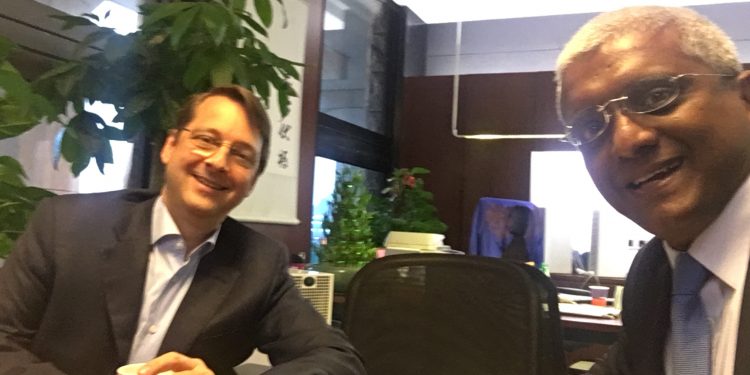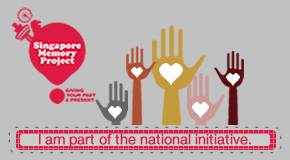The following are some of the points I am learning from my conversations with various peer-to-peer lenders – most recently with Gregg Gibb, the CEO of the Shanghai-based #Lufax (which stands for Lujiazui Financial Exchange), arguably the world’s largest and fastest growing P2P exchange platform. Also with @Giles Andrews, chairman of @Zopa, Europe’s largest P2P, whom I met last year and several other smaller P2P players in the UK and US.
Gregg says that Lufax “saw” 1.7t RMB ($260b) of lending passing through it. “Saw” is a loose euphemism for the amount of loans it helped “organise” both online and offline, as technically it does not carry any loans on its books. Gregg still sees this number as “small” as it is still less than 1% of the estimated 180t RMB asset size of China’s banking industry today. It is also “small” in number of customers (Ollie, Ant and Tencent have easily 500 million online customers each). So the growth potential is still there. The ideas that are forming inside my head are as follows:
- A true P2P business has more going on offline as online. In fact, the online proposition of a P2P is almost only a “conversation point” to engage a portion of their retail lenders and borrowers. But the bulk of the lending (1 trillion RMB is from institutional lenders in Lufax’s case) is originated and managed offline. Only 600b RMB ($91b) were truly retail lenders to retail borrowers, and even there the wealthier lenders with a stronger appetite for high risk were offline. I saw the same with smaller UK ones, such as with Gray Stern of Landbay UK.
- In my view, the term O2O (online to offline) is a dynamic phrase and it actually works two ways – online to acquire and offline to lend, offline to acquire and online to lend.
- Given that so much of its real business is offline, the one clear function of the online part is that these P2P players claim not to need to invest in sales people to originate loans. But sometimes I do wonder if the due diligence staff who prequalify each lender or borrower, of which they have a lot, are also sales persons of sorts. The DNA of the organisation is vested in these due diligence people. If you have due diligence staff who do not appreciate the cost of bad decisions, the entire business can blow up. Right now it is a lenders market, too much funds looking for too few good loans. But as competition to originate funding for the loans increase in future, it is clear that it is the quality of these people who will determine which P2P survives and which crashes and burns.
- The lenders who are driving this industry these days are mostly institutional money looking for yield rather than a real peer to peer lender community, as the model is designed to create. This point is significant because the formula WILL change dramatically when global interest rates start to rise again and this WILL shake out P2P lending models in future.
- The hard work in qualifying both lenders and borrowers is highly manual even if they are on boarded online. Even for retail lenders, those with real money to invest in high risk lending prefer offline engagement.
- So much of the backend of this business is manual– the onboarding, the risk management, the collections.
- There is a “sweet spot” for each P2P model or player. It can be a specific geography, a specific customer segment (for Lufax it is the small business entrepreneur between whom the big four banks can’t onboard), or a really small or local community that is underserved.
- The largest cost in this business is in the acquisition cost of both borrowers and lenders. No one P2P player has clearly enunciated a usable acquisition cost. It’s almost like Uber or AirBNB not counting their acquisition costs because of the focus on scaling, building, ramping up customer size. For P2P lenders it is about not fully recognising their offline costs.
- The biggest differences between the P2P players in the west and those in China are – (1) the better ones in Europe are mirroring too closely the risk management models of the banks, whereas the Chinese ones are onboarding riskier customers (2) the Chinese ones are more liberal also about using their platforms to become supermarkets selling thousands of funds etc. although I would say that it is not yet clear what the real effectiveness of this approach really is. Not all things sell well on cluttered shelves, but it is early days.
- If there are two common errors that I see the founders and owners of the weaker P2Ps falling into in these early days, it is (1) in searching for customers or marketshare too quickly without understanding the real cost of acquisition or (2) falling straight into Ponzi scheme models (eg Ezubao 50b rmb ($7.6b)) simply by promising guaranteed returns that these founders genuinely did not understand. Some founders are bona fide financial illiterates who have never heard of Charles Ponzi or Bernie Madoff.
- Call it cowboy days in China, and the media in the West vilify them, but that is what has created the immense diversity of players from which trends can be identified and a more informed regulatory framework formulated. I actually enjoy watching the Chinese entrepreneurs tread where angels never dare – this is a true regulatory sandbox. 1000 of 4000 Chinese P2P lenders are fraudulent, so what? 3000 of them are not. They have created an amazing ecosystem around a diverse sets of needs that the West can only watch, and a more informed regulatory framework is being introduced. What was the alternative? Clueless regulators tightening the chicken pen ab initio and allowing just 10 P2P players to create a cartel? Gimme a break. Both Chinese and Western ways of looking at it have their fatal flaws. At the end of the day, it is the system’s capacity to absorb the pain that validates it and the China’s capacity for mistakes in the evolution of this industry far outstrips that of any other country on the planet, as they build a funding ecosystem for 1.5b people. “Systemic risk”? We are using old banking language to describe a galaxy that is in its formative stages.
Having said all that, I’d say that #Gregory Gibb runs one of the world’s best P2P platforms. I had met him nearly 20 years ago when he was still an M&A consultant with McKinsey, and then tracked his career to CEO of a bank in Taiwan, before being reincarnated as CEO of Lufax. He has been very fortunate to take on this role of CEO of a Chinese-owned institution because he speaks the language fluently and has tremendous EQ within the community. My interview with him is on http://www.theasianbanker.com/updates-and-articles/interview:-%E2%80%9Cchina-is-creating-more-capital-market-enabled-financial-systems-through-technology-platforms%E2%80%9D









Hi Emmanuel, with most top tier banks running their own Innovation Lab — and producing similar the same innovations (p2p, crowdfunding, bitcoin, $ transfers, card substitution etc.) plays, how do you see these "offsprings" can compete with each other? e.g. re-absorb into the banks?
Cheers!